How Much Does It Cost To Build A Chicken Coop
- February 8, 2024
- 0 comment
For months, the idea of enjoying fresh eggs each morning right from my backyard had been a tantalizing dream. Motivated by this vision, I made the decision to embark on the journey of constructing a chicken coop just steps away from my home. This endeavor, from its initial planning stages to the final touches of execution, was an adventure replete with both exhilarating milestones and unforeseen challenges, not to mention the occasional jolt of realizing the financial investment required.
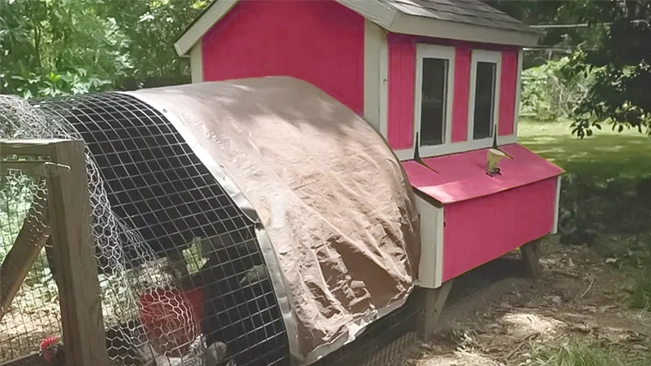
In this narrative, I aim to delve into my personal journey, meticulously detailing the expenses incurred and sharing valuable lessons learned along the way, in hopes of enlightening others who may be contemplating a similar project.
The allure of raising chickens goes beyond the simple pleasure of gathering fresh eggs; it encompasses the broader benefits of leading a more sustainable lifestyle, the convenience of having a steady supply of eggs, the joy of engaging in a rewarding backyard project, and the potential for considerable savings over time.
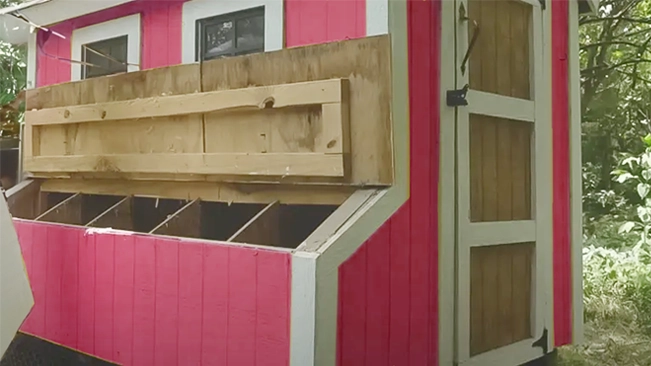
On average, constructing a chicken coop can cost around $650, though expenses can vary widely, typically ranging from $300 to $2,000, depending on the scale and specifications of the project.
This cost variability underscores the importance of thorough planning and budgeting, highlighting that while the upfront investment may seem steep for some, the long-term rewards of self-sufficiency, coupled with the environmental and economic advantages, can make the endeavor profoundly worthwhile.
List of How Much Does It Cost To Build A Chicken Coop:
- Material Costs
- Determinants of Chicken Coop Construction Costs
- Nest Box Considerations
- Space Requirements and Design Influence
- Tools and Equipment
- Unexpected Expenses
- Total Cost
Initial Planning and Design
The initial phase of my project involved a thoughtful consideration of both the dimensions and the architectural layout of the chicken coop. It was imperative to me that the structure be adequately roomy to comfortably accommodate my group of six chickens, yet not so expansive as to overwhelm the modest size of my backyard.
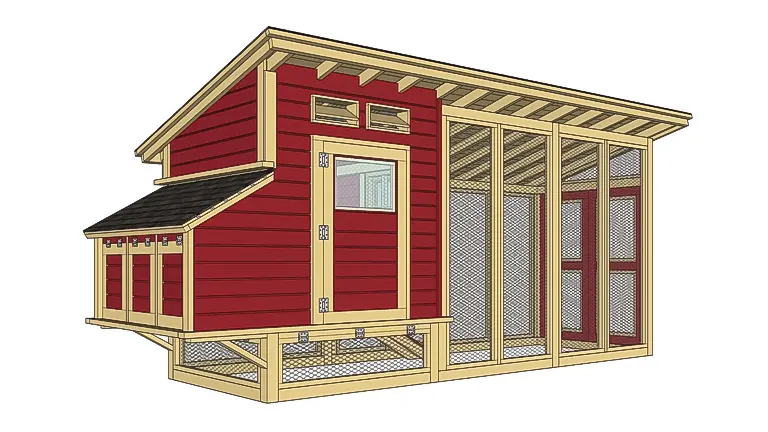
- Constructing a chicken coop typically costs between $300 and $2,000, with the average homeowner spending around $650. This range accounts for various project sizes and complexities.
- The cost of building a chicken coop is influenced by factors such as the number of nesting boxes, coop size and style, construction materials, and the type of flooring chosen. Each aspect plays a role in determining the overall expense.
- Benefits of a backyard chicken coop include raising healthier chickens, enjoying better-tasting eggs, promoting sustainability, enhancing the garden, and encouraging family participation in a collective project.
- While many homeowners can assemble a basic coop using a prefabricated kit, for a more customized or intricate design, hiring a professional might be a wise investment to ensure quality and durability.
After an extensive search online for suitable designs, I made the decision to proceed with a straightforward yet functional 8×6 foot coop, which would also feature an adjoining run for the chickens to roam freely.
This design was carefully chosen to include externally accessible nesting boxes for easy egg collection, a designated area for roosting to provide the chickens with a secure place to sleep, and sufficient ventilation to ensure a healthy living environment for my feathered friends.
1. Material Costs
The bulk of the expenses came from purchasing materials. Here’s a rough breakdown:
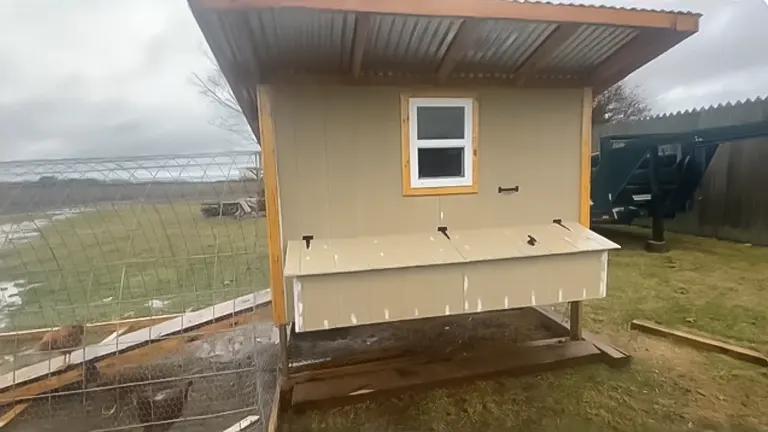
- Lumber: The frame and siding were the most significant expenses. Opting for pressure-treated wood for durability, I spent around $250.
- Hardware: Hinges, latches, nails, and screws added up to about $50.
- Roofing: I chose corrugated metal roofing for longevity and ease of installation, which cost $100.
- Wire Mesh: To secure the run, I used hardware cloth instead of chicken wire for added predator protection, tallying up to $75.
- Paint: To protect the wood and add a personal touch, I spent $30 on exterior paint.
- Miscellaneous: Including sand for the coop floor, perches, and nesting box materials, the miscellaneous expenses were around $45.
Total Material Cost: $550 USD
2. Determinants of Chicken Coop Construction Costs
When embarking on building a chicken coop, understanding the factors that influence the overall cost can help in planning and budgeting effectively. Here’s a detailed look at these determinants:
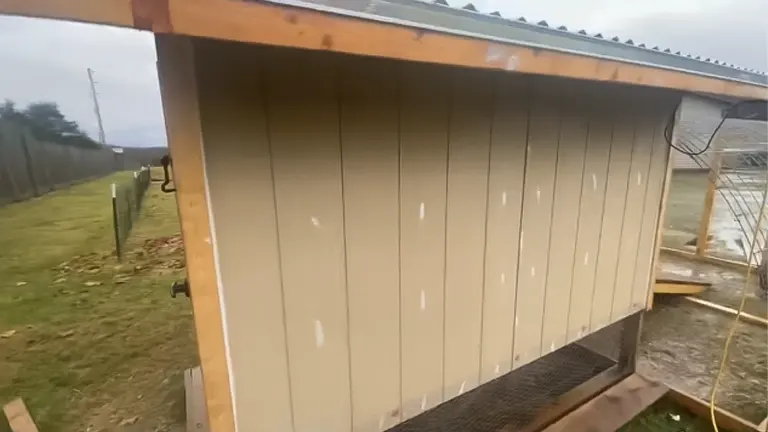
- Quantity of Nesting Boxes: The number of chickens you plan to keep will dictate the number of nesting boxes you need. Each chicken requires a private space to lay eggs, affecting the total cost based on how many boxes are required.
- Dimensions and Design Aesthetics: The size of the coop is directly related to the number of chickens it will house, with each bird needing 3 to 5 square feet of space inside the coop. Larger coops with more sophisticated designs and aesthetics will naturally cost more, both in materials and potentially in design fees if a custom plan is required.
- Construction Materials: The choice of materials for flooring, framing, walls, roofing, and wire mesh can significantly impact the cost. Durable materials like pressure-treated lumber for framing and high-quality metal for roofing are more expensive but offer longevity and better protection for the chickens. Similarly, choosing hardware cloth over chicken wire for the run can add to the cost but provides enhanced security against predators.
- Labor Costs: If you opt to assemble a coop from a prefabricated kit, the labor costs might be minimal, especially if you do it yourself. However, hiring professionals to custom-build a coop can significantly increase the project’s overall cost. The complexity of the design and the local rates for skilled labor will influence this expense.
3. Nest Box Considerations
Nest boxes are a critical component of a chicken coop, providing chickens with a safe and comfortable place to lay their eggs. Here are some detailed points to consider:
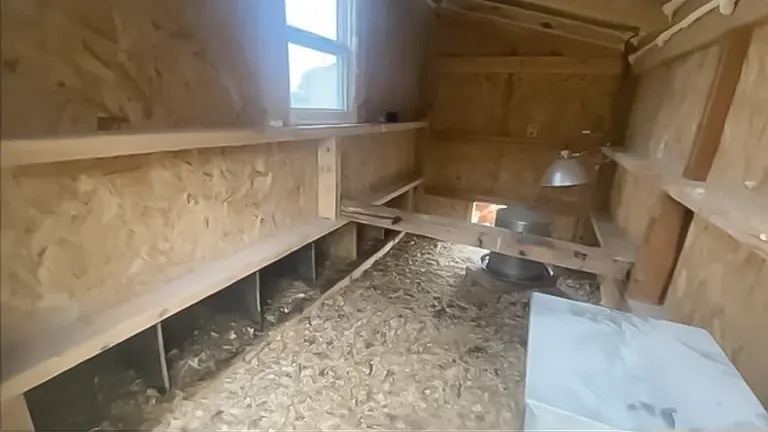
- Functionality and Comfort: Nest boxes should offer privacy and comfort to encourage chickens to lay their eggs. They are typically lined with straw or a similar bedding material to keep the eggs safe and make the chickens feel secure.
- Construction Options: DIY enthusiasts might opt to build nest boxes using simple materials like wood, which can be a cost-effective approach. Pre-made nest boxes, while more convenient, will increase the project’s cost, averaging around $30 each depending on the quality and design.
- Space Requirements: The standard recommendation is to have at least one nest box for every three to four chickens. However, having one box per chicken can prevent competition and ensure that each chicken has access to a nesting spot without waiting.
- Overall Impact on Cost: The total number of chickens you intend to keep will directly affect how many nest boxes you need, thereby influencing the overall cost of the coop. Opting for homemade boxes from scrap materials can reduce costs, while purchasing ready-made options offers convenience at a higher price point.
4. Space Requirements and Design Influence
The number of chickens you plan to keep directly affects the size requirements of the coop, with a larger flock necessitating a more spacious coop. Generally, each chicken should have between 3 to 5 square feet of space within the coop to ensure they can roam comfortably without resorting to aggressive behaviors, such as pecking at each other, due to overcrowding.

Ideally, a coop should not only cater to the current flock size but also offer the flexibility to accommodate future additions. Additionally, the outdoor run space is crucial, with a minimum recommendation of 15 square feet per chicken to allow for adequate movement, though 25 square feet per chicken is preferred by some experts.
For a typical coop housing three to six chickens, this translates to needing at least 30 square feet of interior coop space and between 90 to 150 square feet for the run area. The style of the coop also plays a significant role in determining its cost. Basic A-frame coops can be constructed for approximately $200 to $300, while tractor coops, which are movable to allow chickens access to fresh grass, range from $300 to $500.
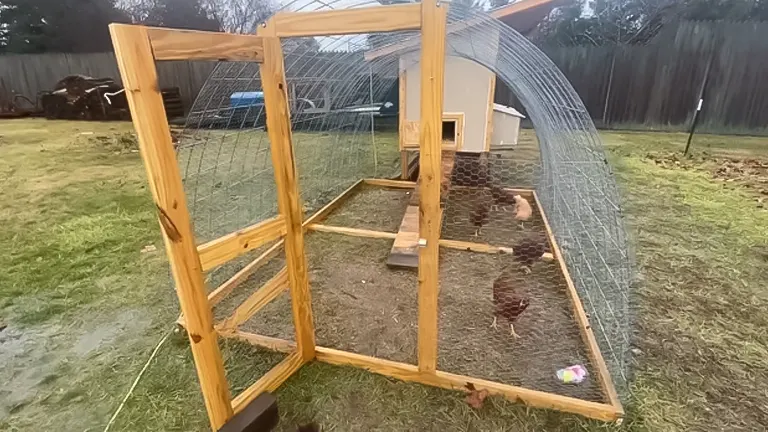
Walk-in coops, offering easy access for cleaning and maintenance, can vary significantly in price from $300 to $1,000. The most elaborate option, all-in-one coops, which integrate nesting boxes, runs, and often automated features, are at the higher end of the price spectrum, costing between $1,000 and $4,000.
5. Tools and Equipment
Embarking on a chicken coop construction project requires a set of tools and equipment, some of which may already be in your possession if you’re inclined towards DIY projects. In my case, I was fortunate to have most of the essential tools on hand, including a circular saw for cutting lumber to the required sizes, a drill for assembling parts with screws, and a hammer for the miscellaneous tasks that invariably arise during such projects.
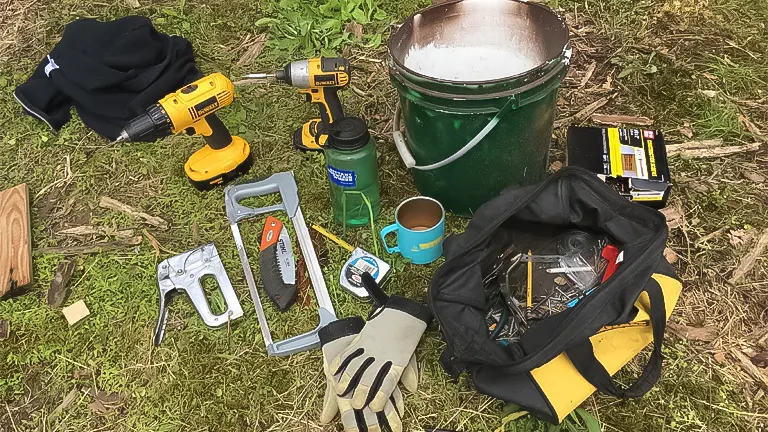
These tools are fundamental for anyone looking to construct a chicken coop, as they cover the basics of cutting, assembling, and securing the structure. However, specific tasks require specialized tools. For the installation of wire mesh—a critical component for securing the chicken coop against predators—I needed a staple gun, a tool I didn’t previously own.
The purchase of a staple gun added $30 to my project’s overall expenses. This cost underscores the importance of planning for both the broad strokes and the finer details of construction projects, as even small tools can impact the budget.
- Labor: One of the most significant ways to control costs in a project like this is through labor. Opting to do the work myself, with the invaluable assistance of a few family members, allowed me to save significantly on labor costs. Beyond the financial savings, this DIY approach transformed the project into an enjoyable and fulfilling family endeavor. It’s a reminder that building something with your own hands, especially with loved ones, can add immeasurable value that transcends the mere financial aspects of the project.
Unexpected Expenses
No matter how meticulously one plans, unforeseen expenses are almost a given in any construction project. My experience was no different. Despite careful planning, I found myself needing to return to the hardware store multiple times for additional lumber and hardware, items I had overlooked in my initial budgeting. These extra trips resulted in an additional expenditure of $50, highlighting a common pitfall in DIY projects: the likelihood of encountering unexpected costs. This reality emphasizes the need for a contingency budget, allowing for a buffer to accommodate such surprises without derailing the overall project financially.
Total Cost
All in, the total cost to build my chicken coop was approximately $1,500. This figure was a bit more than I initially budgeted for, but the satisfaction of building a secure and comfortable home for my chickens was well worth the investment.
Related Articles:
- Best Bedding For Chickens
- Best Safe Chicken Coop Heater
- 8×8 Chicken Coop Plans
- Turning a Shed Into a Chicken Coop
- How to Make a Chicken Coop Out of Pallets
- Best Sand for Chicken Coop
- How To Insulate a Chicken Coop
- How To Heat a Chicken Coop
- How To Keep Water from Freezing in Chicken Coop
- How to Build a Chicken Coop
- How To Build Chicken Nesting Boxes
- How to Raise Happy and Healthy Chickens in Your Backyard
- When Can Chicks Go Outside? Timing and Tips for a Smooth Transition
- 12 Reasons why Ducks are Better than Chickens
- Best Automatic Chicken Coop Doors 2024: Expert Reviews & Buyer’s Guide
- Best Fans for Chicken Coop 2024: Effective Cooling Solutions Reviewed
Final Thoughts
Building a chicken coop from scratch is definitely a labor of love. It requires time, effort, and a bit more money than you might expect. However, the rewards—both in terms of fresh eggs and the joy of watching your chickens explore their new home—cannot be overstated.
For those considering building their own coop, my advice is to budget carefully, be prepared for unexpected expenses, and don’t rush the process. The result will be a coop that’s both functional and a source of pride for years to come.
Frequently Asked Questions
- What is the average cost to build a chicken coop?
The national average cost for building a chicken coop ranges from $300 to $2,000, with most homeowners spending around $650. This cost varies depending on size, materials, and complexity of the design. - What factors influence the cost of a chicken coop?
Key factors include the number of nesting boxes, size and style of the coop, materials used for construction (flooring, framing, walls, roofing, mesh), and labor costs for assembly or custom building. - Can I build a chicken coop myself to save money?
Yes, many homeowners opt to build their own coops using prefabricated kits or by sourcing materials independently. This DIY approach can significantly reduce costs, especially in terms of labor. - How much space does each chicken need in the coop?
Each chicken requires 3 to 5 square feet of space inside the coop. Overcrowding can lead to stress and aggressive behavior among chickens. - Do larger coops cost significantly more than smaller ones?
Generally, yes, as larger coops require more materials and potentially more complex construction, leading to higher costs. However, planning for future flock expansion can be cost-effective in the long run. - What is the cost difference between using prefabricated kits vs. custom designs?
Prefabricated kits can be more affordable, ranging from a few hundred dollars to over a thousand, depending on the quality and features. Custom designs, especially those requiring professional assistance, can cost anywhere from $1,000 to $4,000 or more. - Are there any hidden costs in building a chicken coop?
Potential hidden costs include additional hardware, unforeseen construction challenges, or the need for specialty tools. Allocating a buffer in your budget for unexpected expenses is advisable. - How does the choice of materials affect the overall cost?
The cost can vary widely based on material choices, with more durable and high-quality materials (like pressure-treated wood or high-grade metal for roofing) costing more upfront but offering longevity and better protection. - What additional features might increase the cost of a chicken coop?
Features like automatic waterers/feeders, electrical wiring for heating/lighting, and predator-proofing measures can add to the initial cost but provide long-term benefits. - Is it more cost-effective to expand an existing coop or build a new one?
Expanding an existing coop can be more cost-effective if the structure is sound and can accommodate the additional space needed. However, if the existing coop cannot support an expansion or if significant modifications are required, building a new coop might be more economical in the long run.
We’re eager to hear from you! Share your own experiences and insights on building a chicken coop in the comments section below. Your personal stories and advice could greatly assist others in making well-informed decisions about their own chicken coop projects. Whether it’s about budgeting, choosing materials, or overcoming challenges, your contribution is invaluable!

Edward Smith
Forestry AuthorWoodworking is about more than crafting; it's a harmonious connection with nature, mastering tools, and preserving our environment. I'm here to share my knowledge and experiences with you, forging a future where we can embrace wood's beauty and utility while safeguarding our forests' health and diversity.













Leave your comment